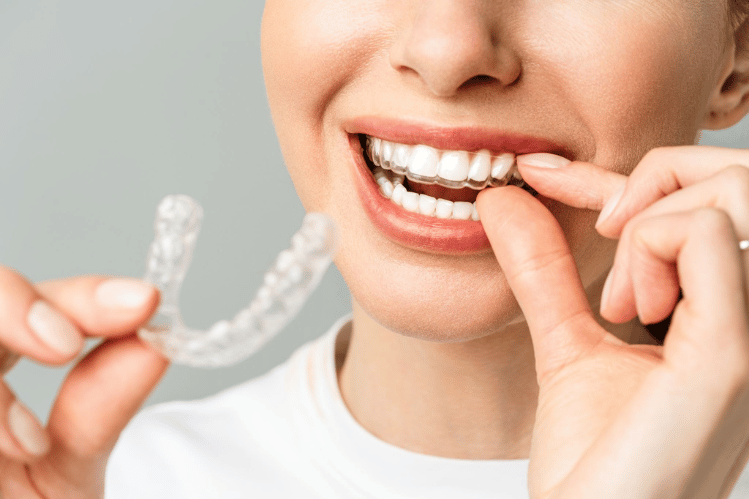Not known Details About Legacy Orthodontics
Not known Details About Legacy Orthodontics
Blog Article
The 2-Minute Rule for Legacy Orthodontics
Table of ContentsGet This Report on Legacy OrthodonticsNot known Details About Legacy Orthodontics Excitement About Legacy OrthodonticsNot known Facts About Legacy OrthodonticsA Biased View of Legacy Orthodontics
In addition, we use adjustable treatment timetables, flexible payment alternatives and a fun, enjoyable experience.An orthodontist is a dental practitioner educated to detect, avoid, and deal with teeth and jaw abnormalities. Orthodontists function with individuals of all ages, from youngsters to adults.
Malocclusion, or misaligned teeth, can result in oral concerns, consisting of tooth degeneration, periodontal condition, and difficult or unpleasant chewing. Not everyone is birthed with straight teeth. If you have a poor bite or large spaces between your teeth, you may wish to seek advice from a dental expert focusing on orthodontic care.
Some Known Details About Legacy Orthodontics
( Photo Credit: DigitalVision/Getty Images) Orthodontists utilize repaired and removable dental devices, like dental braces, retainers, and bands, to change the setting of teeth in your mouth. Orthodontic therapy is for oral problems, including: Misaligned teethBite issues, like an overbite or an underbiteCrowded teeth or teeth that are too much apartJaw misalignmentThe objective of orthodontic treatment is to improve your bite.
A healthy bite guarantees you can consume, eat, and talk properly. While you might think of orthodontists as primarily for kids or teenagers that need dental braces, they can fix dental issues at any kind of age. Orthodontists go to college, oral school, and orthodontic college. After college graduation, they invest 2 or 3 years in an orthodontic residency program.
, however not all dentists are orthodontists. They focus on 2 locations: Just how to effectively and safely relocate teeth Just how to properly lead growth in the teeth, jaw, and faceOnce an orthodontist has actually completed training, they have the choice to end up being board accredited.
The smart Trick of Legacy Orthodontics That Nobody is Talking About
Misalignment, or malocclusion, is one of the most common reason people see an orthodontist. It is genetic and is the outcome of size differences between the upper and lower jaw or between the jaw and teeth. Malocclusion brings about tooth overcrowding, a twisted jaw, or uneven bite patterns. Malocclusion is generally treated with: Your orthodontist connects metal, ceramic, or plastic square bonds to your teeth.
If you have just minor malocclusion, you might have the ability to use clear braces, called aligners, instead of standard dental braces (https://linktr.ee/brianmccune20176). Some individuals require a headgear to help you could look here relocate teeth right into line with stress from outside the mouth. After dental braces or aligners, you'll require to wear a retainer. A retainer is a custom-made device that maintains your teeth in location.
They can create additional space in the mouth without having to draw teeth. Orthodontists make use of wires, surgical screws, or plates to support your jaw bone.
You might need to see an orthodontist if you have: Crowding or otherwise enough room for every one of your teethOverbite, when your top teeth come your base teethUnderbite, when your base teeth are also much forwardSpacing or issues with gapsCrossbite, which is when your upper teeth fit behind your base teeth when your mouth is closedOpen bite or a vertical space between your front base and top teethMisplaced midline, when the center of your bottom and top teeth do not align Correcting an oral malocclusion can: Make attacking, eating, and talking easierImprove the proportion of our face and your overall appearanceEase discomfort from temporomandibular joint disordersSeparate your teeth and make them simpler to clean up, helping stop dental caries or tooth cavities It's usually a dental practitioner that initially notifications misaligned teeth throughout a regular test.
Everything about Legacy Orthodontics

During your first orthodontic assessment, you'll likely have: A dental examPhotos taken of your face and smileDental X-raysPanoramic (360 level) X-rays of your face and headImpressions to create mold and mildews of your teethThese tests will assist your orthodontist understand how to continue with your therapy. leesburg clear braces. An orthodontist is a dentist that's had training to treat your teeth and jaw
Orthodontists might carry out surgery, exams,X-rays,and even more to aid you attain a much more comfortable, healthier smile. An orthodontist is concentrated on your bite, so something like a damaged tooth would be managed by a dentist. Orthodontists are dental experts yet not all dental experts are orthodontists. Orthodontists are focused on your bite, or the method your teeth meshed, and the straightness of your teeth.
Ever questioned just how celebs constantly appear to have flawlessly lined up teeth? The solution typically depends on the competent hands of an orthodontist. Yet what specifically does an orthodontist do? Orthodontists are dental specialists who concentrate on fixing irregularities in the teeth and jaws. Their expertise goes beyond just producing a lovely smile; it encompasses improving your overall oral health and wellness and function.
Get This Report on Legacy Orthodontics

, orthodontists have a varied toolkit at their disposal. These reliable dental braces make use of a system of brackets adhered to the teeth and attached by cables.
Clear aligners, like Invisalign, are a preferred choice for patients looking for a much more discreet treatment alternative. These detachable trays are customized to gradually shift the teeth's placement. Headgear may be used combined with braces or aligners to use extra targeted pressures, especially for dealing with jaw disparities. In situations of slim jaws, palatal expanders can be utilized to develop area for appropriate tooth alignment.
Report this page